Introduction: Beam Angle - The Overlooked Core of Lighting Design
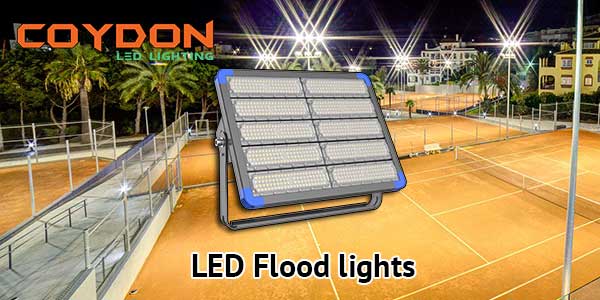
Have you ever aimed to illuminate a wide area, only to end up with annoying bright spots, dark patches, and wasted light causing glare? The culprit is often not the brightness of your flood lights, but a frequently underestimated specification: the beam angle.
Simply put, the beam angle determines how light is distributed from a fixture. It directly controls the coverage area, uniformity, and overall visual impact of your lighting scheme. Choosing incorrectly can lead to energy waste, light pollution, and a failed project.
This guide will show you how to master this crucial parameter. Discover how high-efficiency LED flood lights, offering a wide range of precise beam angles, provide the ultimate solution. You can achieve perfect, efficient illumination for any application.
Part 1: Deep Dive into LED Flood Light Beam Angles

What is a Beam Angle? Moving Beyond “Wide” and “Narrow”
A beam angle is a precise scientific measurement. It is the angle at which light intensity drops to 50% of its maximum center value. This measurement defines the spread of usable, intense light from a fixture. Understanding this concept is crucial for professional lighting design and installation. The beam angle directly impacts coverage, intensity, and overall efficiency.
A simple analogy helps visualize this technical specification. A narrow beam acts like a focused flashlight. It projects a concentrated, long-reaching spot perfect for highlighting distant objects. A wide beam functions like a traditional lantern. It emits soft, diffuse illumination that covers broad areas evenly. Between these extremes are medium beams that balance focus and spread. Each type serves distinct lighting purposes and applications.
Choosing the correct beam angle is fundamental to lighting success. It determines the difference between targeted, efficient illumination and wasted, scattered light. Proper selection ensures optimal coverage without dark spots or glare. This principle applies to all lighting scenarios from sports stadiums to parking lots. The right angle maximizes visual impact while minimizing energy consumption. It also reduces light pollution and improves visual comfort.
Our KD-FLN and KD-FLM series exemplify this precision engineering. They offer a complete spectrum from 10° ultra-narrow spot to 130° x 30° extra-wide flood. This comprehensive range provides perfect solutions for any lighting challenge. Such precise control represents the true foundation of modern professional lighting. Advanced optical systems ensure clean, sharp cut-offs and maximum efficiency. These fixtures deliver superior performance for diverse applications.
Part 2: Beam Angle Types and Applications: A Complete Guide
1. Precision Marksman: Narrow Beam Angles (10° ~ 30°)
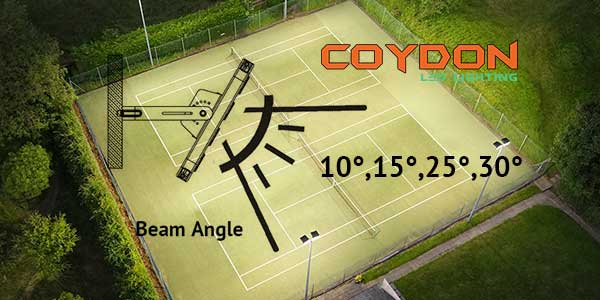
Narrow beam angles function like precision optical instruments. They concentrate luminous flux into tight, powerful cones of light. This optical control enables exceptional throw distances unmatched by wider beams. The intense center beam creates dramatic contrasts against darker surroundings. This produces compelling visual tension and draws immediate attention.
These specialized beams serve critical roles in architectural lighting. They masterfully illuminate vertical elements like clock towers and monuments. Sports facilities rely on their precision for professional-grade playing fields. They ensure perfect vertical illumination for television broadcasts. Landscape architects employ them as artistic tools. They can isolate and highlight specific mature tree canopies. This creates stunning nighttime focal points within gardens.
The technical advantages extend beyond visual impact. Narrow beams deliver superior energy efficiency for long-distance applications. They minimize light spill into unwanted areas. This reduces overall energy consumption significantly. It also helps combat light pollution in sensitive environments. The focused nature allows for precise targeting. This ensures illumination reaches exactly where needed.
Our KD-FLM series represents the pinnacle of narrow beam technology. It features precision-engineered 10° and 25° beam options. These fixtures incorporate advanced optical lenses. They maintain sharp beam edges over remarkable distances. Professional installers choose them for challenging projects. They trust the consistent performance and reliability. These lights transform difficult lighting scenarios into success stories.
2. The Versatile Performer: Medium Beam Angles (45° ~ 60°)
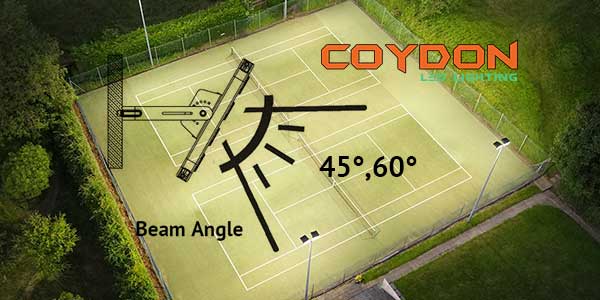
Medium beam angles achieve the perfect balance. They blend generous coverage with maintained intensity. This dual capability makes them incredibly versatile. They serve as the workhorse of professional lighting.
These beams excel at architectural facade lighting. They create even, consistent illumination across building surfaces. Industrial applications benefit greatly from their spread. They perfectly light warehouse loading bays and mid-sized parking areas. In landscape design, they provide ideal coverage. They beautifully illuminate groups of trees or sculpture installations.
The balanced light distribution offers multiple advantages. It eliminates harsh shadows and dark spots. This creates a comfortable visual environment. The wide yet controlled spread ensures efficient area coverage. It reduces the number of fixtures needed for projects.
Our KD-FLN series masters this essential category. It features reliable 45° and 60° beam options. These fixtures deliver consistent performance across various applications. They represent the true all-rounder in flood lighting solutions. Professionals trust them for dependable results every time.
3. The Area Dominator: Wide Beam Angles (90°)

Wide beam angles deliver expansive illumination. They create soft, uniform light distribution. This eliminates harsh shadows and dark spots. Their broad coverage makes them ideal for large areas.
Security applications benefit greatly from these beams. They provide excellent perimeter protection lighting. Large parking lots achieve perfect baseline illumination. Public spaces transform with their even glow. Parks and plazas become welcoming and safe.
Architectural lighting uses them effectively. They wash low-rise building facades with clean light. This showcases architectural features beautifully. The wide spread ensures complete wall coverage.
Our product line masters wide-angle lighting. Both the KD-FLN and KD-FLM series offer 90° beam angles, guaranteeing comprehensive area coverage. These fixtures completely eliminate dark corners, representing the ultimate solution for illuminating expansive spaces.
Energy efficiency remains a key advantage. Fewer fixtures cover more ground. This reduces installation and operating costs. The uniform light creates comfortable environments. Visual comfort improves significantly under this lighting.
4. The Smart Solution: Asymmetric Beam Angles (e.g., 65° x 25°, 130° x 30°)
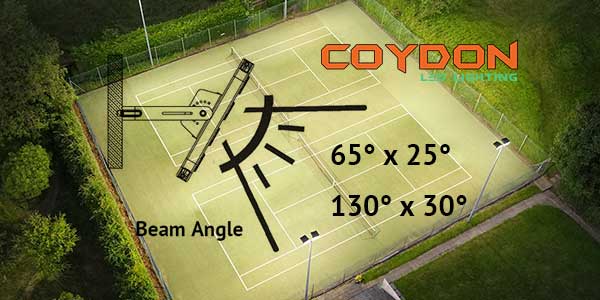
Asymmetric beams revolutionize lighting design. They break free from circular light patterns. This creates controlled, rectangular light distribution. The result is dramatically reduced spill light and waste.
Road and pathway lighting achieves new efficiency. Light is precisely directed onto the travel surface. It avoids illuminating adjacent buildings or the night sky. This meets dark sky compliance standards beautifully.
Signage lighting becomes exceptionally effective. The beam shape matches rectangular signs perfectly. This eliminates wasted light around the edges. Energy efficiency reaches its highest potential here.
Architectural applications benefit significantly. Building gables and specific facades gain even illumination. The rectangular light curtain appears uniform and professional. It highlights architectural lines with clean precision.
Our KD-FLM series features this star capability. Options include 65° x 25° and 130° x 30° beams. Choosing these means embracing intelligent lighting management. You achieve superior results while conserving energy. This represents environmentally responsible lighting practice.
These beams demonstrate technical sophistication. They solve specific lighting challenges elegantly. Professional designers value their precision and control. They represent the future of application-specific lighting solutions.
Part 3: The 5-Step Method to Select the Perfect Beam Angle

Step 1: Define Your Lighting Objective with Precision
Start by establishing clear lighting goals. Different purposes demand different beam characteristics. Are you creating dramatic accent lighting for architectural features? Is perimeter security your primary concern? Perhaps you need ambient illumination for public spaces. Each objective suggests specific beam angle ranges. Accent work typically uses angles under 30 degrees. General illumination works best between 45-90 degrees. Safety lighting often requires 90 degrees or wider. Document these requirements before proceeding further.
Step 2: Measure Critical Spatial Relationships
Accurate measurements form the foundation of good lighting design. Record the mounting height from ground to fixture. Note the horizontal distance to your target area. These measurements determine light spread and intensity. Higher installations generally need narrower beam angles. The target size relative to distance is equally important. Small objects at long distances require tight beam control. Large areas need correspondingly wider light distribution. Always verify measurements on-site before final decisions.
Step 3: Master the Beam Spread Calculation
The fundamental formula is: Coverage Diameter = 2 × Distance × tan(½ Beam Angle). This calculation predicts your light pattern size. For quick planning, remember these approximations:
- 10° covers about 0.18x the distance.
- 15° covers about 0.26x the distance.
- 25° covers approximately 0.44x the distance.
- 30° covers approximately 0.54x the distance.
- 45° covers roughly 0.83x the distance.
- 60° covers about 1.15x the distance.
- 90° covers nearly 2x the distance.
For specialized applications, our KD-FLM series offers asymmetric beams like 65° x 25° and 130° x 30°. These create precise rectangular illumination patterns ideal for large-area lighting and industrial zone illumination. They provide controlled light distribution over vast distances with minimal spill. This calculated approach ensures optimal performance for demanding professional projects.
Step 4: Recognize and Avoid Common Pitfalls
Many lighting projects suffer from preventable errors. Narrow beams placed too close create blinding hotspots. Wide angles mounted too high produce dark zones below. Mixing incompatible beam angles creates visual chaos. Consider environmental factors like light trespass. Evaluate potential glare for pedestrians and drivers. Account for seasonal changes in vegetation. These considerations separate amateur attempts from professional results. Learning from others’ mistakes saves time and money.
Step 5: Implement Professional Validation Methods
Modern lighting design utilizes advanced tools. Software like Dialux creates precise photometric simulations. These programs model real-world lighting performance. They account for surface reflectances and atmospheric conditions. Many manufacturers provide IES files for accurate modeling. Our technical team specializes in these simulations. We offer comprehensive lighting analysis services. This includes illuminance calculations and glare evaluation. Professional verification ensures optimal results before installation.
Bringing It All Together: Practical Application
Combine these steps systematically for best results. Begin with clearly documented objectives. Gather accurate site measurements and constraints. Perform calculations to identify candidate beam angles. Review against potential implementation pitfalls. Finally, validate through professional simulation tools. This methodical approach guarantees successful outcomes. It transforms lighting from guesswork into precise engineering.
Part 4: Why Our Beam Angle Solutions Deliver Exceptional Returns

1. Beyond Angles: A Victory in Comprehensive Efficiency
Our lighting solutions represent more than technical specifications. They deliver tangible financial and operational returns. The strategic combination of advanced optics and superior engineering creates exceptional value. This transforms ordinary illumination into smart business investments.
2. Unmatched Luminous Efficacy: 130 lm/W Performance
Experience unprecedented energy savings without compromising light quality. Our 130 lm/W efficacy leads the industry. Each watt consumed generates more usable light output. This directly reduces your electricity costs significantly. Compare this to conventional alternatives achieving only 100-120 lm/W. The difference becomes substantial over your system’s lifetime. This efficiency also supports sustainability goals effectively. Lower energy consumption means reduced environmental impact.
3. Complete Application Flexibility: Total Beam Control
Choose from the industry’s most comprehensive beam angle portfolio. The FLN series offers five precise beam options. The FLM series provides six standard beams plus exclusive asymmetrical patterns. This extensive selection covers virtually any application scenario imaginable. Design without constraints or compromises. Switch between applications using the same reliable product platform. This flexibility simplifies inventory and maintenance requirements substantially.
4. Engineered for Long-Term Reliability: Built to Endure
Our fixtures feature robust aluminum construction throughout. Premium PC lenses ensure consistent optical performance. The IP66 rating guarantees protection against harsh weather conditions. This comprehensive durability ensures uninterrupted operation year after year. The 5-year warranty provides complete peace of mind. Reduced maintenance needs mean lower operating costs over time. This reliability makes our products the smart long-term investment choice.
5. Integrated Smart Lighting Advantages
Our beam angle technology enables smarter lighting layouts. Fewer fixtures achieve better coverage through precise light control. This reduces both initial equipment costs and installation expenses. The superior thermal management extends LED lifespan considerably. Consistent color temperature maintains visual comfort throughout the night. These integrated benefits create a compelling total cost advantage.
6. Proven Across Multiple Applications
Our solutions deliver results across diverse sectors. Stadium operators achieve broadcast-quality lighting with fewer fixtures. Industrial facilities report 30% energy savings annually. Municipalities reduce light pollution while improving public safety. Architectural projects gain stunning visual effects with minimal energy use. These real-world successes demonstrate our technology’s versatile superiority.
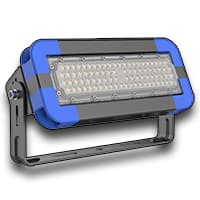
50 Watt
KD-FLN-W50
310mm x 87mm x 170mm
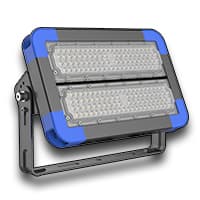
100 Watt
KD-FLN-W100
310mm x 87mm x 228mm
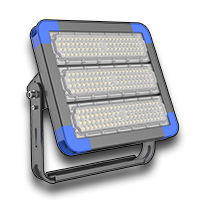
150 Watt
KD-FLN-W150
310mm x 87mm x 309mm
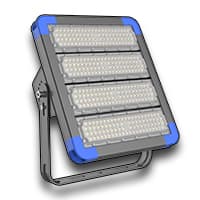
200 Watt
KD-FLN-W200
310mm x 87mm x 382mm

250 Watt
KD-FLN-W250
310mm x 87mm x 459mm
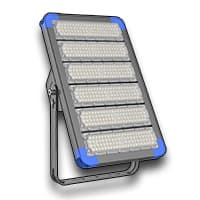
300 Watt
KD-FLN-W300
310mm x 87mm x 539mm

400 Watt
KD-FLN-W400
310mm x 107mm x 388mm

500 Watt
KD-FLN-W500
310mm x 107mm x 461mm
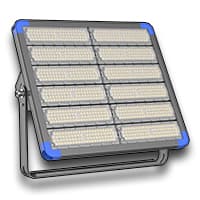
600 Watt
KD-FLN-W600
310mm x 107mm x 529mm

750 Watt
KD-FLM-W750
462mm x 584mm x 111mm
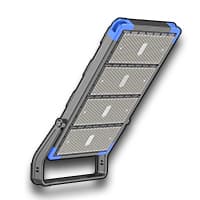
1000 Watt
KD-FLM-W1000
462mm x 761mm x 111mm
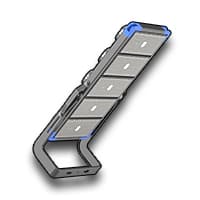
1250 Watt
KD-FLM-W1250
502mm x 1072mm x 307mm
| Input Voltage: | AC 85V – 277V | |
| Colour Temperature: | 3000K / 4500K / 6000K | |
| Color Rendering Index: | 80+ | |
| LED Type: | LED SMD 3030 ( Lumileds ) | |
| IP Grade: | IP66 | |
| Material: | Aluminium + PC Lens | |
| Luminous Efficiency: | 130 Lumens per watt | |
| Beam Angle: | KD-FLN: 15° / 30° / 45° / 60° / 90° KD-FLM: 10° / 25° / 45° / 60° / 90° / 65 x 25° / 130 x 30° | |
| Warranty: | 5 Years |
Conclusion

Selecting the correct beam angle proves fundamental to successful lighting. It directly determines energy efficiency, visual appeal, and spatial comfort. This technical decision impacts both operational costs and aesthetic results. Proper beam selection eliminates wasteful light spill and glare. It creates precisely controlled illumination exactly where needed.
This choice represents more than technical specification. It embodies a strategic approach to modern lighting design. It balances performance with environmental responsibility. Energy conservation and light pollution reduction become achievable goals. Superior visual experiences merge with sustainable practice.
Our comprehensive beam angle solutions make this balance possible. They provide the tools for intelligent lighting design. These technologies transform how we illuminate spaces. They represent the future of responsible, effective lighting.
We invite you to experience this difference firsthand. Let us demonstrate how proper beam angles can transform your project. Achieve perfect lighting that serves both function and vision.
Ready to Transform Your Lighting Project?

Precise beam angles deliver maximum efficiency and impact. Get expert help tailored to your specific needs. Our lighting specialists will create a custom solution for your space. Receive your personalized lighting plan and competitive quote. Click ‘Inquiry Now’ for professional consultation. Our team will respond within 24 hours.
